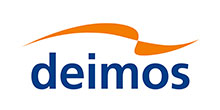Cheops satellite successfully launched to study size of known exoplanets orbiting bright, nearby stars
Elecnor Deimos has developed two of the most important components of the scientific centre of Cheops satellite: mission planning and archiving, dissemination and cataloging of data.
18th of December, 2019
The CHaracterising ExOPlanets Satellite or Cheops is the first mission of ESA aiming to study exoplanets already discovered, planets that are outside our solar system, when they pass in front of the star around which they orbit.
The satellite measures the intensity of the light of the star with incredible precision and the variations of the same when the exoplanet passes by interfering with the amount of light obtained. This is called transit photometry. This difference in brightness can be used to characterize the size of these planets with accuracy and as Cheops will study planets of known mass and determine their size, their density can be calculated, thus defining whether they are large gaseous clouds or small rocks.
The Portuguese participation should be highlighted, among which is the co-leadership of Deimos Engenharia, together with the Institute of Astrophysics and Space Science, of the scientific components of the mission.
“We have developed two of the most important components of the scientific centre of Cheops. The main one is the planning system, which will compile all the observation requests from scientific community during the satellite timelife” says Nuno Ávila, Managing Director of Deimos Engenharia. He also explains that the system allows “to organize in an optimal way” all the requests “so that the telescope can guarantee as many observations as possible during its timelife”. It is estimated that there will be between three and five thousand applications over the three and a half years of mission, which will range from observing a star at a given time and date to monitoring a the same star for weeks.
Deimos has also collaborated in the development of the system of archiving and dissemination of data and cataloging of all the information that has been collected from the different stars. This development has been based on the suite GS4EO of ground segment products developed by Deimos monitor4EO and archive4EO, which have been adapted and optimized for use in Science and Space Exploration missions.
The Portuguese Space Agency, Portugal Space, expands the information on Portuguese participation at this link.
Image credits: ESA – M. Pedoussaut, ATG medialab







